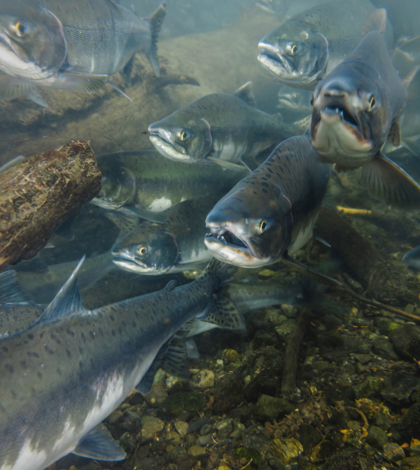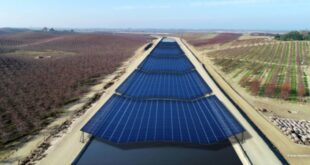Mature salmon looking for key spawning areas received a boost earlier this week when the California Department of Water Resources (DWR) commenced a salmon spawning improvement project by placing 5,000 cubic yards of spawning gravel into the Feather River. Much of the salmon spawning area was washed away earlier this year as a result of the high river flows during Water Year 2016-17 as well as the high flows from the Oroville Dam spillway.
In anticipation of the traditional salmon spawning season – which begins in September – the gravel for salmon nests, called “redds” has been placed behind the city of Oroville’s Municipal Auditorium. Salmon need clean spawning gravel in order to dig their redds. The female salmon will dig a shallow hole in the gravel by fanning her tail. She will then lay a few thousand eggs in the hole to be fertilized by the male fish. Via external fertilization, the male releases his sperm called milt. The pair then usually moves upstream slightly and repeats the process. The gravel that is dug for the second redd washes downstream and lands on the first redd thus covering it to provide protection for the first batch of fertilized eggs.
DWR conducted a similar successful spawning improvement project in 2014. Anticipating future high river flows requiring gravel replacement, DWR stockpiled a supply of the spawning gravel near the Feather River Fish Hatchery in 2014. Regardless, the process of distributing the spawning gravel has required heavy equipment vehicles such as dump trucks, bulldozers, and excavators in order to complete the project.
“Immediately after we completed the gravel project in 2014, we saw a dramatic increase in the number of spawning redds in this area. It was wildly successful,” said Jason Kindopp, DWR Feather River fishery biologist. “I can’t wait to see what happens this time.”
The DWR project is expected to be completed by the end of August for the September spawning season. The area is a popular spawning location so DWR biologists expect the newly placed gravel to get high use. The project is anticipated to improve and increase the spawning habitat available to the local salmon, thereby increasing the number of salmon produced.
 California Water News Daily Your Source For Water News in California
California Water News Daily Your Source For Water News in California


